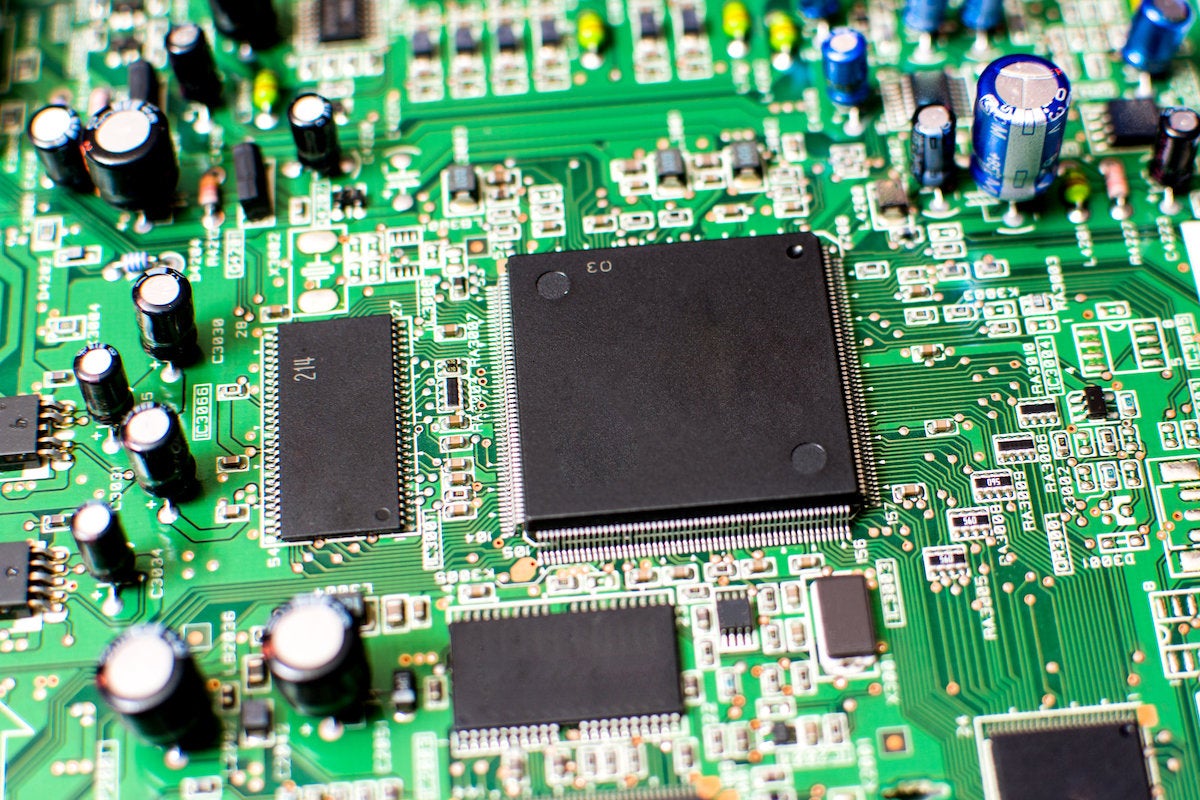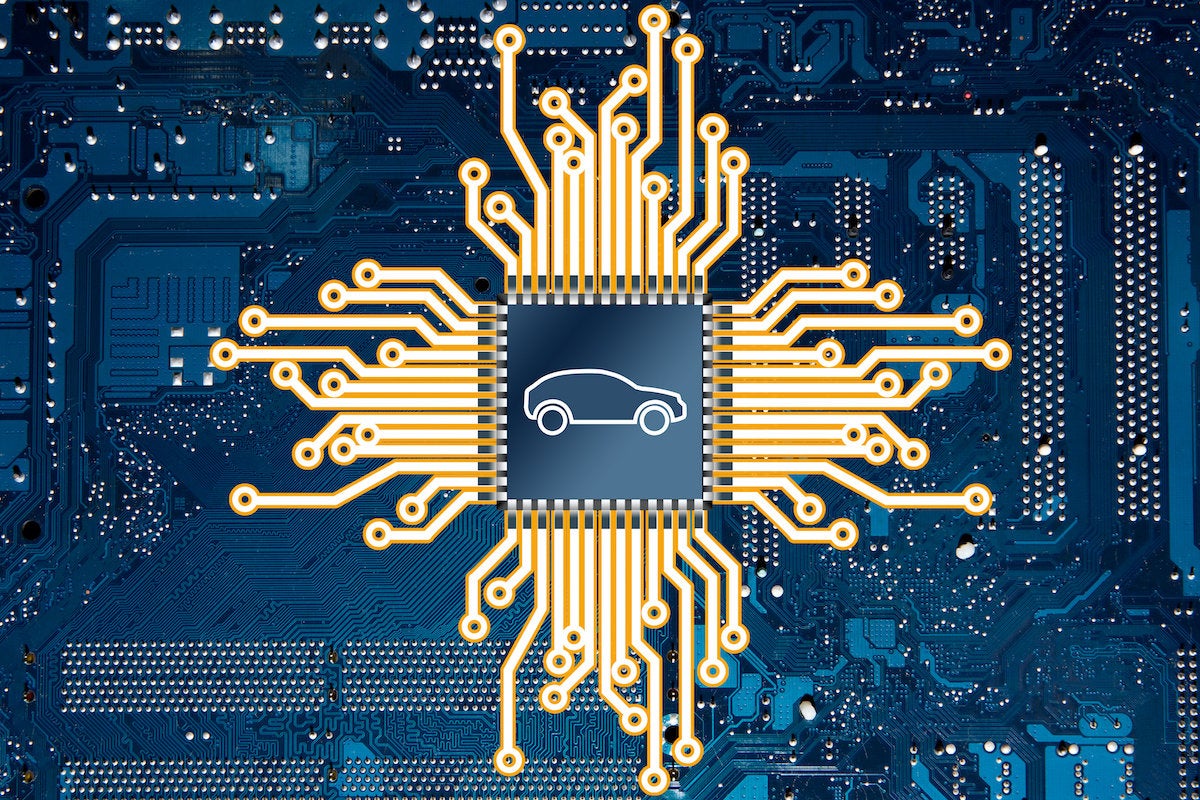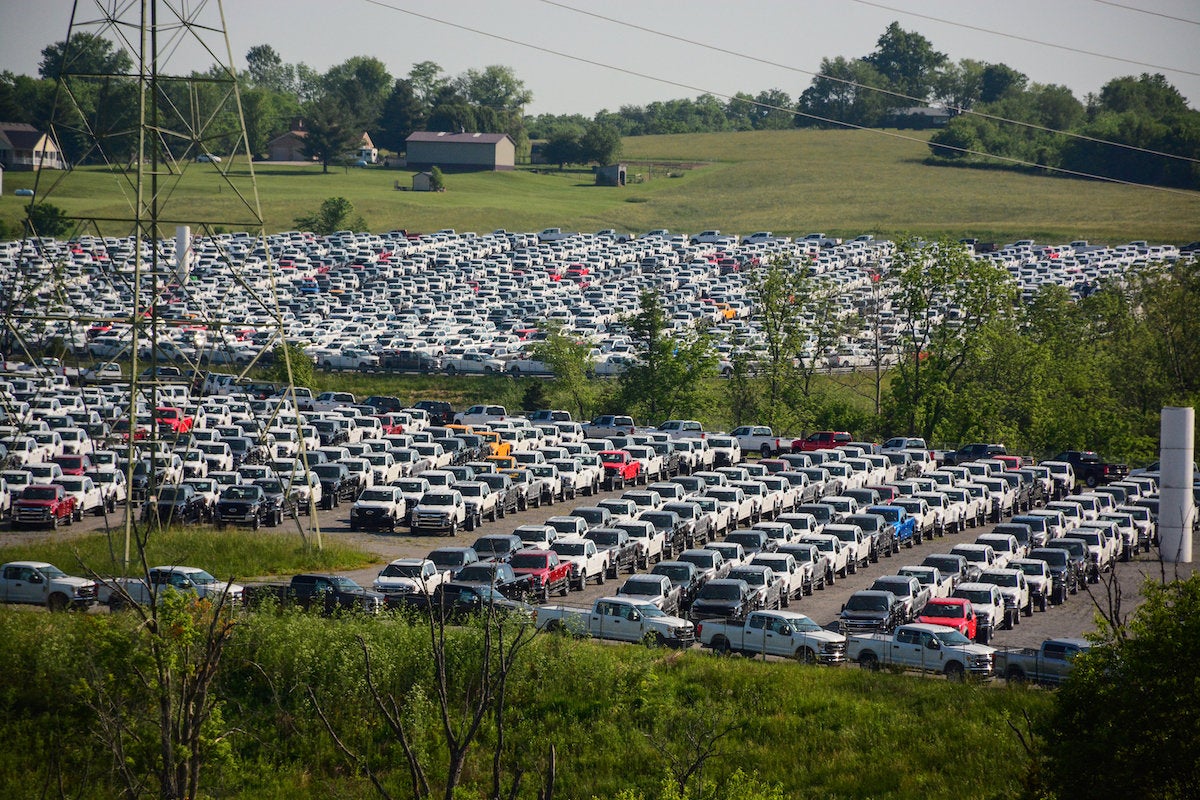The Covid-19 pandemic has devastated multiple areas of society, and a slow return to normalcy has been fraught with setbacks. Among the casualties is the US car market, which has been forced to, among other things, limit production and furlough workers. And at the center of all this disruption is a tiny part that that’s likely in your hand or pocket right now: a microchip.
The global chip shortage that has resulted from the Covid pandemic has affected anyone even remotely connected to the auto industry—from a driver looking to replace their Toyota Camry to a factory worker responsible for mounting seats in a Chevy Silverado. Why? Because it's caused a prolonged interruption in vehicle production—the kind of interruption that can have a debilitating impact on daily life.
What Are Chips?

When talking about car parts, the first items that come to mind are likely tires, brakes, wipers, or any other part that typically needs servicing or repair during ownership. However, with significantly more complex newer vehicles, we may find ourselves needing to replace an infotainment system, tire-pressure or parking sensors, or perhaps a control module designed to make an engine perform at peak efficiency. Those technology-rich features, and many others, are dependent upon small semiconductors, or computer chips, to function properly.
These chips are made of silicon, which is sourced primarily from Japan and Mexico, while the bulk of production takes place in China and Taiwan. They’re used in every electronic device you can imagine, including smartphones, video game consoles, televisions, laptops, and even that smart refrigerator telling you the milk is about to expire.
How Did the Chip Shortage Begin?
In the early months of the 2020 pandemic, as the US and its economy largely shut down to prevent the spread of Covid-19, automakers and other non-essential businesses looked toward a bleak future, at least in the short term. As people were forced to stay home and their incomes suddenly became less stable, car sales would surely plummet. In anticipation of hard times to come, automakers limited production shifts, furloughed workers, and temporarily shuttered some plants entirely. They also canceled contracts with parts suppliers, as they didn’t expect a need for components when vehicles weren’t being built or sold.
With the pandemic worsening, schools shifted to online learning and millions of employees now logged in from home to do their jobs. The need for consumer electronics like laptops and smartphones increased exponentially. Worried about moving inventory, automakers offered buyer incentives and, with their dealers, shifted toward an online sales process and offered at-home test drives and deliveries.
Perhaps surprisingly, consumers went on a buying spree. Since most activities were now confined to the home, individuals and families were no longer spending money on daycare, take-out lunches, travel, or even gym memberships. And there was increasing consumer demand for gaming systems, televisions, and any other electronic gadget that would keep children entertained and parents sane.
The spending frenzy expanded into all areas of the economy, including the automotive sector. New vehicles were selling, inventory was growing limited due to factory shutdowns, and transaction prices were rising. Car companies were caught off guard but could quickly send employees back to the production plants. Unfortunately, they’d need a steady supply of chips, all of which were now be allocated elsewhere.
And, thus, the auto industry had a semiconductor chip shortage.
Impact of the Chip Shortage

With the exception of luxury models, vehicles in particularly high demand, and some limited-edition variants, US car sales have been largely bolstered by heavy incentives in recent years. Typically, these consisted of generous rebates and low-rate financing offers. Dealerships were flush with inventory, to the point that many needed to rent satellite lots to store the seemingly constant stream of cars and trucks coming from the factory. Paying MSRP (Manufacturer’s Suggested Retail Price) was uncommon.
The chip shortage has turned that scenario on its head. A CarGurus Vehicle Availability Index analysis carried out in May 2021 paints a clear picture of how the US car market has changed in the past year:
- New-car inventory is down 51.9%
- New-car prices are up 5.7%
- New-car dealership inventory of used vehicles is up 8.2%
- Used-car dealership inventory is down 7.4%
- Used-car prices are up 34.7%
- Days-on-market for new and used cars is down 38%
The drop in new-car inventory is due to several factors. The temporary production shutdowns caused by the pandemic meant there was less inventory when the deluge of buyers returned, and limited stockpiles of semiconductors forced carmakers to shift priorities. Companies from Mercedes-Benz to General Motors (GM) took a similar approach: dedicate the limited supply of chips to the most profitable vehicles. By foregoing production of models like the Chevrolet Trax and Mercedes-Benz C-Class, they could focus on loaded Tahoes and S-Class sedans. As inventory dwindled, demand outstripped supply and prices rose. The result? Incentives have largely disappeared, buyers are willfully paying MSRP for loaded models, and automakers see profits despite selling fewer vehicles.
The buying frenzy also covers the used-car market. Dealers are selling every new car they can get, but they desperately need buyers’ trade-ins, which have therefore increased in value. Previously, dealers may have made low offers for these cars, or immediately wholesaled them to used-car dealers, but they are now selling them retail for a tidy profit. Private owners, looking at their car that has suddenly appreciated in value, are entering the market to get top dollar through a sale or new-car trade.
Responses to the Chip Shortage

In addition to using scarce semiconductor chips in premium vehicles, GM and Ford are two automakers that have kept production rolling for some of their best-selling trucks and SUVs. Tens of thousands of nearly complete Ford F-150s and Chevrolet Silverados are being stored at facilities across the country, sitting in limbo waiting to be fitted with chips that will make them fully functional and ready for delivery to dealers. Automotive News has reported that Ford is considering shipping these F-150s to dealerships, where technicians will complete final chip installation.
In other cases, automakers are announcing vehicles will no longer be sold with certain features. GM, for example, no longer offers automatic engine stop-start or HD radio for some Chevrolet Silverados, and it has canceled availability of a wireless smartphone charger from several SUVs and crossovers.
Lessons Learned from the Chip Shortage
Unfortunately, no one has come up with an immediate fix for the semiconductor chip shortage, but efforts are already being made to ensure this scenario isn’t repeated. As noted in Fortune, German automakers are developing a cloud-based warning system that would alert them of potential disruptions in the supply chain. Other companies are working toward the same goal by improving communication with not only direct suppliers, but also the sub-suppliers that may be best suited to deliver early warnings.
Attention is also being focused on supply levels. In the name of efficiency, some automakers use a lean-inventory approach that means parts come in as they’re needed for vehicle production. A stockpile or reserve of semiconductor chips may have been beneficial in this situation.
And, as one might suspect, there has been plenty of talk about diversifying the supply chain. Chipmaker Taiwan Semiconductor reported that it will be increasing production capacity by 60%, but there is a real push to build semiconductors and other essential components here in the US. President Biden has proposed spending $50 billion to support the effort.
The Bottom Line
Covid-19 has underlined the importance of our ability to adapt. Individuals and families had to do it, as have businesses and governments. Consumers continue to buy cars, albeit often at higher prices and perhaps without all of their favorite features.
Perhaps the most surprising takeaway is this: Mainstream, mass-market automakers have found a way to increase profits by building and selling fewer vehicles. To do so, they’ve focused on delivering a limited number of heavily equipped models that sell without discounts. For the time being at least, consumers are lining up to buy them.
Related Topics:
What to Know When Getting a Car Loan
5 Things You Can Do to Lower Auto Insurance Costs
How To Choose Between Gas, Diesel, Hybrid, and Electric Cars
